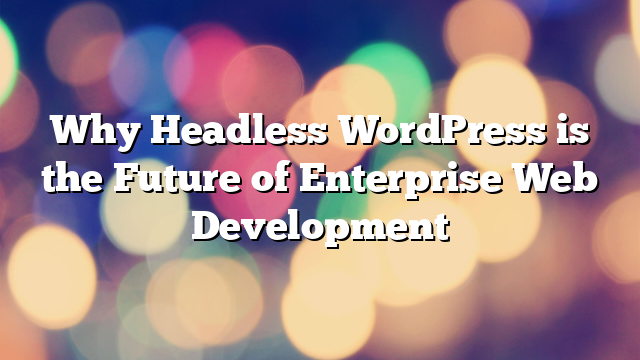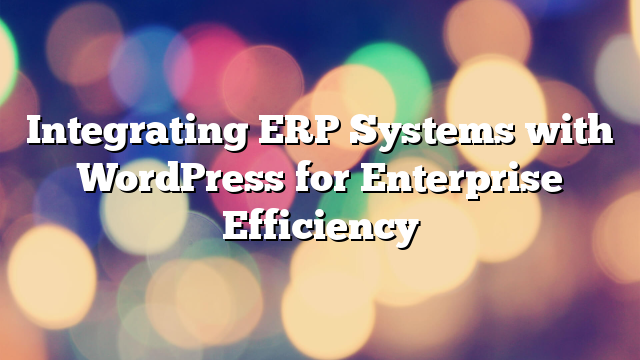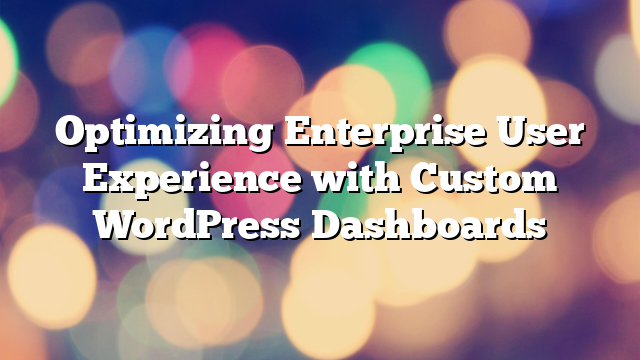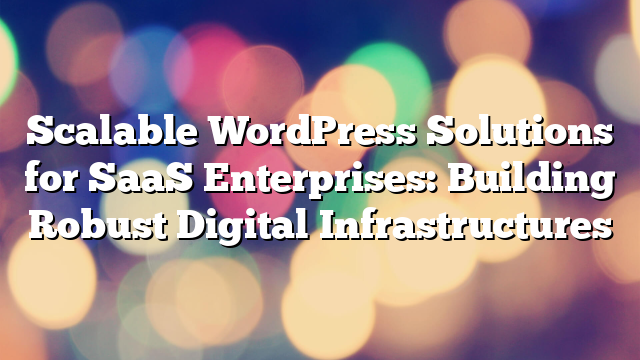Why Headless WordPress is the Future of Enterprise Web Development
01.01.2025

Headless WordPress has become a game-changer in the digital landscape, particularly for enterprise-level websites that demand high performance, flexibility, and scalability. By decoupling the WordPress backend from the frontend, businesses can build seamless, modern user experiences while retaining the robust content management capabilities of WordPress. In this article, we’ll explore why headless WordPress is the future of enterprise web development and how it can transform your digital strategy.
What is Headless WordPress?
Headless WordPress refers to a setup where WordPress functions as a backend CMS, while the frontend is handled by a separate application or framework, often built with JavaScript libraries like React, Vue.js, or Angular. Communication between the backend and frontend occurs via APIs, such as the WordPress REST API or GraphQL.
This architecture offers unmatched flexibility, allowing enterprises to tailor their frontends to specific needs and deliver faster, more dynamic websites.
Benefits of Headless WordPress for Enterprises
1. Enhanced Performance
Headless setups are designed to optimize performance. By leveraging modern JavaScript frameworks and static site generators, enterprises can significantly reduce page load times and improve site speed. Faster websites lead to better user experiences and higher conversion rates.
2. Scalability
Enterprises often need to handle high traffic volumes and extensive content libraries. Headless WordPress enables businesses to scale efficiently by separating the backend and frontend workloads. This decoupling ensures consistent performance, even during traffic surges.
3. Flexibility in Frontend Design
With headless WordPress, developers are not constrained by traditional WordPress themes. They can use cutting-edge frameworks and tools to create custom, engaging user interfaces that meet specific business goals.
4. Omnichannel Content Delivery
Headless WordPress enables enterprises to distribute content across multiple platforms, including websites, mobile apps, IoT devices, and even AR/VR applications. This capability ensures consistent messaging and a cohesive user experience across all touchpoints.
5. Improved Security
By separating the frontend from the WordPress backend, the attack surface is significantly reduced. This architecture makes it harder for malicious actors to exploit vulnerabilities, enhancing overall website security.
6. Future-Proof Architecture
Headless WordPress allows enterprises to stay ahead of the curve by adopting the latest technologies and frameworks without being tied to WordPress’s traditional frontend structure. This flexibility ensures that businesses can adapt to future web development trends.
Use Cases for Headless WordPress
1. Large-Scale E-Commerce
Headless WordPress is ideal for e-commerce platforms that require fast, dynamic interfaces and seamless integrations with payment gateways, inventory systems, and CRMs. By leveraging a headless setup, enterprises can create a high-performing shopping experience.
2. Global Enterprises
For multinational companies managing multiple regional websites, headless WordPress provides the scalability and flexibility needed to deliver localized content while maintaining a unified brand identity.
3. Content-Rich Websites
News outlets, media platforms, and educational institutions can use headless WordPress to manage extensive content libraries and deliver high-speed, interactive user experiences.
4. Mobile-First Applications
Headless WordPress enables enterprises to use the same backend to power both their websites and mobile apps, ensuring consistent data and seamless user experiences across devices.
Challenges of Headless WordPress
1. Increased Complexity
A headless architecture requires expertise in both backend and frontend development. Enterprises must invest in skilled developers to manage and maintain such setups.
2. Higher Initial Costs
While headless WordPress offers long-term benefits, the initial development costs can be higher compared to traditional WordPress setups. However, the ROI often justifies the investment.
3. Content Preview Limitations
In a headless environment, previewing content changes can be challenging. Developers need to implement custom solutions to provide editors with a preview feature.
Best Practices for Implementing Headless WordPress
1. Choose the Right Frontend Framework
Select a frontend framework that aligns with your project requirements. React, Vue.js, and Angular are popular choices for building dynamic, responsive interfaces.
2. Optimize API Usage
APIs are the backbone of a headless WordPress setup. Use caching, minimize API calls, and ensure efficient data fetching to optimize performance.
3. Invest in a Scalable Infrastructure
Ensure your hosting and server configurations can handle the demands of a headless architecture. Cloud-based solutions like AWS or Google Cloud are excellent options.
4. Prioritize Security
Implement robust security measures for your APIs and backend, including authentication protocols, SSL encryption, and regular updates.
5. Plan for Long-Term Maintenance
Headless WordPress setups require ongoing maintenance to ensure compatibility with new technologies and frameworks. Partnering with an experienced development team can help streamline this process.
Conclusion
Headless WordPress is redefining the possibilities of enterprise web development, offering unmatched performance, scalability, and flexibility. While it comes with its own set of challenges, the benefits far outweigh the drawbacks, making it an ideal choice for forward-thinking businesses. If your enterprise is ready to embrace the future of web development, contact AllWebDev to explore how headless WordPress can elevate your digital presence.



